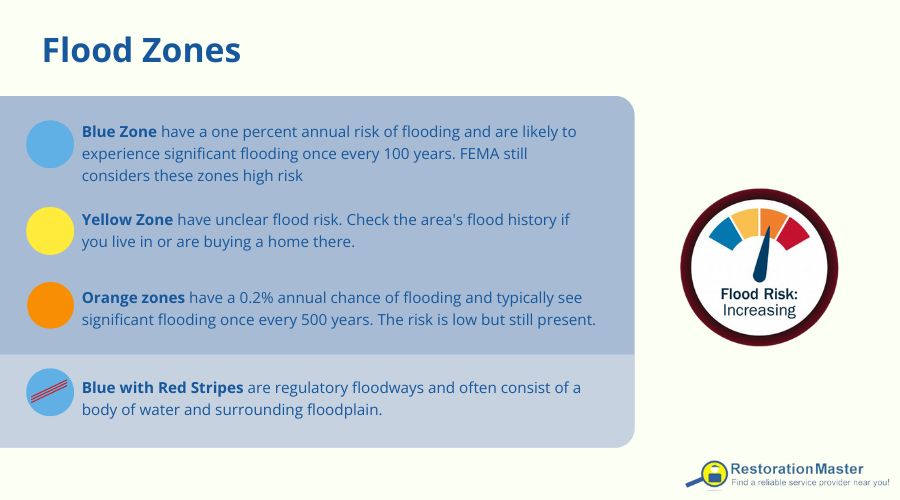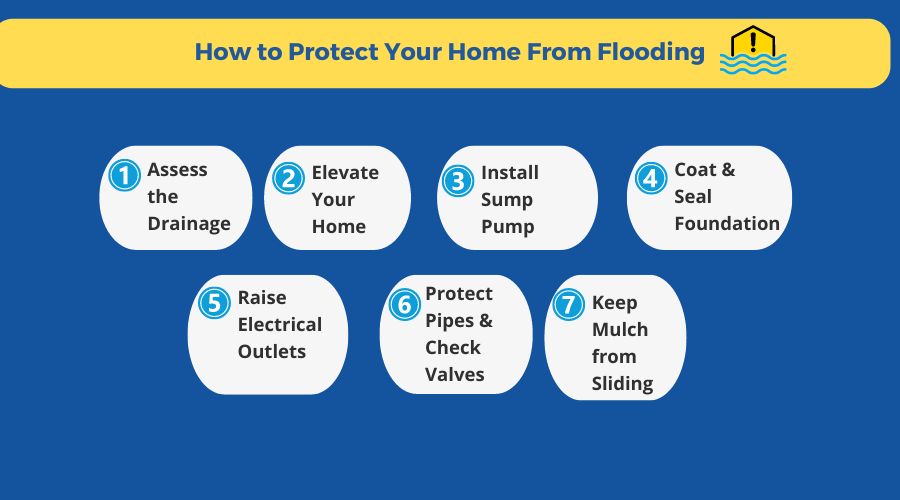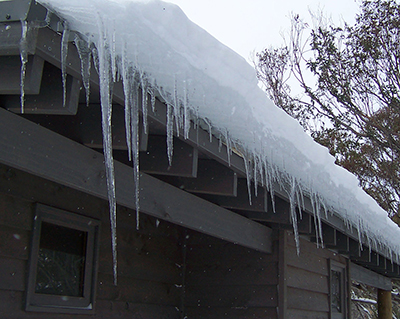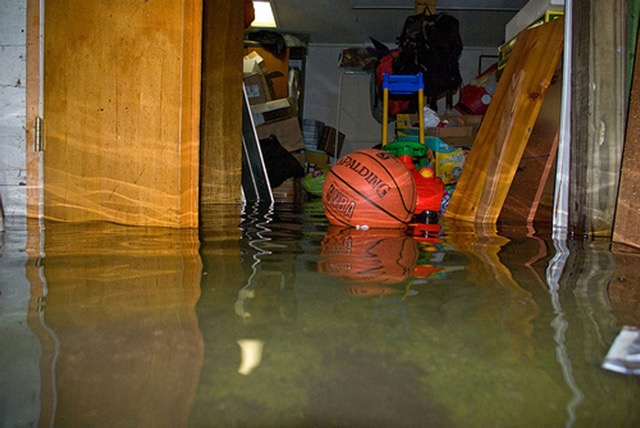How to Prevent Indoor Flooding from Storms

Know Your Flood Zone
You will have a better idea of how to protect your home from floodingFlooding is the overflow or accumulation of water in areas t... More by understanding flood zones and knowing what type of flood zone you live in. FEMA has designated four different types of flood zones assigned to regions based on their general flood risk. You can see what flood zone your home is in using the FEMA Flood Map Service.

The following are the four main types of flood zones
- Blue Zones: These zones face a 1% annual risk of floodingFlooding is the overflow or accumulation of water in areas t... More and can expect significant floodingFlooding is the overflow or accumulation of water in areas t... More approximately once every 100 years. Despite this relatively low annual risk, FEMA classifies these zones as high risk.
- Orange Zones: These zones have a 0.2% annual chance of floodingFlooding is the overflow or accumulation of water in areas t... More and can experience floodingFlooding is the overflow or accumulation of water in areas t... More about once every 500 years. Although the risk is lower, homeowners should still take precautions to protect their property from potential floodingFlooding is the overflow or accumulation of water in areas t... More.
- Yellow Zones: Flood risk in these zones remains undetermined. If you live in or plan to buy a home in a yellow zone, research the flood history of the area to better assess your risk. Even in these zones, actively protecting your home from floodingFlooding is the overflow or accumulation of water in areas t... More is crucial.
- Blue with Red Stripes: These zones are regulatory floodways, often featuring a body of water and its surrounding floodplain. Authorities keep these areas clear to allow water from adjacent flood zones to drain. However, homes sometimes get built in or near these zones. If your home is in or near this type of zone, you must take every precaution to protect it from floodingFlooding is the overflow or accumulation of water in areas t... More.
Once you determine what type of flood zone you are in, you will have a clearer idea of your risk and what you need to do to protect your home. Your flood zone will also affect flood insurance policies from the National Flood Insurance Program. The important thing to remember is that no matter what flood zone you live in, there is always a risk of floodingFlooding is the overflow or accumulation of water in areas t... More.
How to Protect Your Home from Flooding
No matter what type of flood zone you live in, severe storms can strike anywhere, and indoor floodingFlooding is the overflow or accumulation of water in areas t... More is always a possibility. Being proactive in protecting your home from floodingFlooding is the overflow or accumulation of water in areas t... More can save you thousands of dollars in restorationRestoration is the process of returning a property to its pr... More and repairs. You can help protect your home from floodingFlooding is the overflow or accumulation of water in areas t... More caused by storms by taking the following actions:

Assess the Drainage on Your Property
Proper drainage of the gutters and your yard helps prevent indoor floodingFlooding is the overflow or accumulation of water in areas t... More and water damage. Make sure to check the gutters on your home and observe how water drains on your property. The gutters should be in good repairRepair is the act of fixing or restoring damaged property, m... More and cleared of debris so that rainwater can move through the gutters and downspouts unimpeded. You should also make sure that the downspouts drain the water far enough away from your foundation.
To ensure that water drains properly around your home, check the slope of your yard, and look for areas of the property where pooling occurs. The ground should slope downward, away from your home to prevent water from pooling near your foundation. If your yard is not sloping away from the home or draining properly, you may need to work with a general contractor to fix this issue.
Raise Your Home
If your home is in a flood zone with a high risk of floodingFlooding is the overflow or accumulation of water in areas t... More, you may consider raising your home on stilts or piers. While raising your home may be an expensive project, it will raise the flood level of your home which could prevent thousands of dollars in flood damage. This is generally only done to homes in high-risk areas.
Install a Sump Pump
Sump pumps are generally installed in basements to collect excess water in a basin to prevent it from floodingFlooding is the overflow or accumulation of water in areas t... More your home and expel the water at a safe distance. They are very effective at preventing indoor floodingFlooding is the overflow or accumulation of water in areas t... More from heavy rain, but they need a power source to operate. It is wise to have a battery powered backup for your sump pumpA sump pump is a pump installed in a basement or crawlspace ... More in case the power goes out during a storm.
Coat and Seal Foundation
Many cases of indoor floodingFlooding is the overflow or accumulation of water in areas t... More occur because of vulnerabilities in the foundation. Check your foundation, walls, windows, and doorways for cracks or leaks and seal them with coatings or sealants. This will prevent flood water from entering your home through the cracks.
Raise Electrical Outlets
It is important for electrical outlets, sockets, switches, and circuit breakers to be high enough that flood water from a typical flood will not reach it. When flood water reaches an outlet, this increases the risk of electrical fires and electrocution.
If the electrical outlets and switches in your home are too low, consider having them raised.
Protect Pipes with Check Valves
Pipes that direct water out of your home should be fitted with check valves that prevent water and sewageSewage is wastewater containing biological and chemical cont... More from backing up into your home. Make sure to install check valves that provide a good seal.
Keep Mulch Away from Siding
If you are mulching areas close to the home, make sure the mulch does not touch the siding. Wet mulch can rot the siding of your home which will cause leaks and leadLead is a heavy metal that can be toxic to humans, especiall... More to water damage. Leaving space between the mulch and siding will allow the siding to dry after it rains and avoid damage from wet mulch.
Professional Storm Damage Restoration
Taking the steps outlined above can help reduce the risk of water damage and floodingFlooding is the overflow or accumulation of water in areas t... More in your home when a storm occurs. However, water damage is not the only type of damage that a storm can cause. Severe storms often have strong winds that can damage the roof and siding and leave your home open or unstable.
If your home is heavily damaged after a storm, you need to call a professional for storm damage restoration. These professionals will stabilize and repairRepair is the act of fixing or restoring damaged property, m... More the structural damage as well as address water damage and floodingFlooding is the overflow or accumulation of water in areas t... More to return your home to its pre-storm condition.












